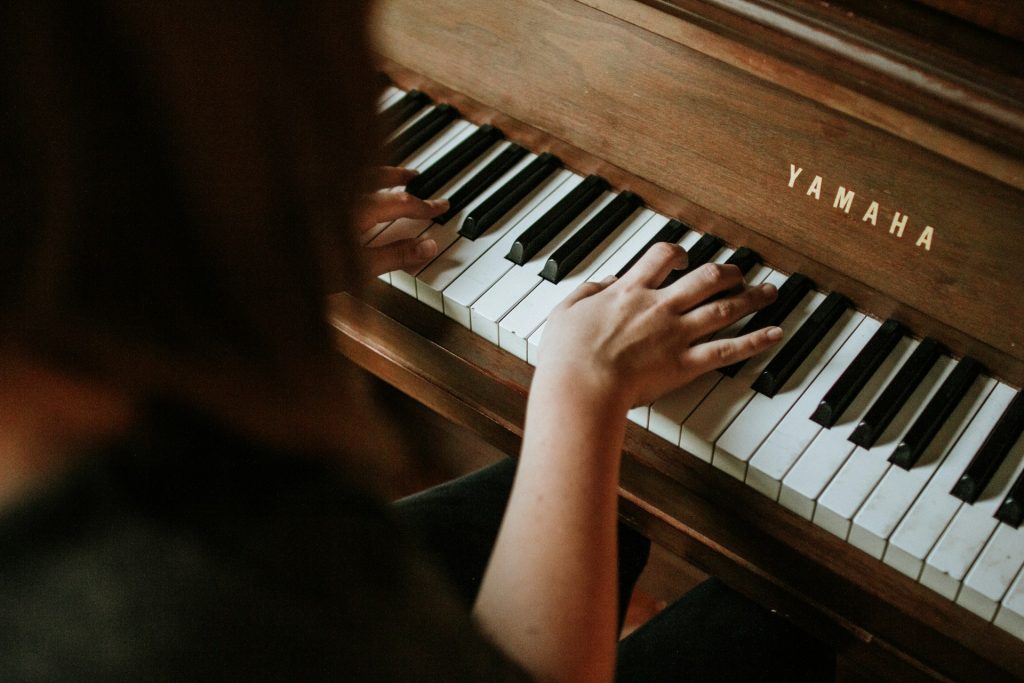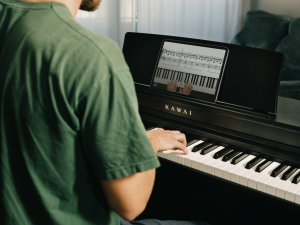Piano tuning is an art that marries precision with passion, a skill that transforms the mere striking of keys into a harmonious cascade of sound. It’s a crucial aspect of piano maintenance, ensuring that each note resonates with clarity and accuracy. For those embarking on the journey of learning piano, understanding the fundamentals of piano tuning is not just about maintaining an instrument; it’s about nurturing a relationship with music itself.
In this guide, we delve into the world of piano tuning, offering a comprehensive overview for both beginners and seasoned pianists. Whether you’re tuning a piano for the first time or looking to refine your technique, this guide will provide you with the knowledge and tools necessary to achieve the perfect pitch.
Piano tuning is not just a technical necessity; it’s a gateway to a deeper understanding of your instrument. As you learn how to tune a piano, you develop a finer ear for pitch and tone, enhancing your overall musical experience. This guide aims to demystify the process, making piano tuning an accessible and rewarding part of your musical journey.

Essential tools for piano tuning
Before diving into the tuning process, it’s crucial to equip yourself with the right tools. Piano tuning requires specific instruments designed to ensure precision and care. Here’s what you’ll need:
- Tuning lever/hammer: This is the primary tool used for turning the tuning pins. A good quality lever provides better control and reduces the risk of damaging the pins.
- Mutes/wedges: These are used to silence strings not being tuned, allowing you to focus on one string at a time.
- Electronic tuning devices (ETDs): For those wondering how hard it is to tune a piano, ETDs can be a game-changer. They provide visual aids for achieving the correct pitch.
When selecting these tools, consider their quality and suitability for your piano. High-quality tools not only make the tuning process easier but also protect your piano from potential damage.
Remember, the right tools are the foundation of successful piano tuning. With these in hand, you’re ready to embark on the tuning journey.
Preparing for the tuning process
Tuning a piano is a delicate task that requires preparation and understanding of the instrument’s mechanics. Before you start turning any pins, here are the steps to ensure you’re ready for the tuning process:
- Familiarize yourself with your piano: Each piano has its unique characteristics. Take time to understand its age, condition, and any specific tuning needs it might have.
- Establish a tuning curve: This is the overall pitch layout of the piano. It’s crucial to have a clear plan for the tuning curve, especially for older or more worn instruments.
- Set the standard tuning reference: Concert Pitch A4 = 440 hz is often the standard tuning reference pitch. However, some countries use different reference pitches. Ensure your tuning is aligned with this reference pitch for consistency.
- Environment check: Ensure the room where you’re tuning is quiet and free from temperature and humidity fluctuations. These factors can affect the tuning process and the piano’s stability.
- Inspect the piano: Check for any loose pins, damaged strings, or other issues that might affect tuning. Addressing these beforehand can save time and ensure a smoother tuning process.
By preparing thoroughly, you set the stage for a successful tuning session, reducing the chances of errors and ensuring the best possible sound from your piano.
Step-by-step piano tuning guide
Tuning a piano can seem daunting, especially for beginners. However, with the right approach, it becomes a manageable and rewarding task. Here’s a step-by-step guide to help you through the process:
- Initial pitch evaluation: Start by assessing the current pitch of each string. This will give you a baseline to work from.
- Tuning the middle octave: Begin with the middle octave, as it sets the standard for the rest of the piano. Use your tuning lever and ETD to adjust each string to the correct pitch.
- Sequential tuning order: After the middle octave, move outward. Tune the upper octaves first, then the lower ones. This order helps maintain balance across the keyboard.
- Muting techniques: Use mutes to isolate strings. There are various methods:
- Left to right: Simple and straightforward, ideal for beginners.
- Leapfrog: For more challenging sections, where you skip over strings and come back to them.
- Strip mute: Useful for tuning all center strings first, then the unisons.
- Fine-tuning: Once all strings are roughly in tune, go back and fine-tune. This involves making small adjustments to ensure each string is perfectly in pitch.
- Checking your work: Play scales and chords to check the tuning. Listen for any beats or dissonance and make necessary adjustments.
Remember, tuning a piano yourself requires patience and practice. Don’t rush the process, and be attentive to the subtle changes in sound as you adjust each string.
Advanced tuning techniques
Once you’ve mastered the basics of piano tuning, you can explore advanced techniques to refine your skills further. These methods will help you achieve a more precise and harmonious sound:
- Fine-tuning individual strings: Focus on each string within a note, ensuring they are perfectly in tune with each other. Listen carefully for beats or slight variations in pitch and adjust accordingly.
- Tuning the lower and upper registers: The lower and upper registers of the piano can be more challenging due to their unique string configurations. Pay special attention to the bass strings, as they often require a different approach due to their thickness and tension.
- Addressing common tuning challenges: Learn to recognize common issues like false beats or unstable pins and how to address them. Develop a keen ear for subtle pitch differences, which is crucial in these registers.
- Additional tips for optimal tuning: Regular practice is key. The more you tune, the better you’ll become at identifying and correcting pitch discrepancies. Don’t rush the process. Take your time to listen and adjust each string carefully.
By incorporating these advanced techniques into your tuning routine, you’ll be able to ensure that your piano not only sounds good but resonates with the depth and richness that only a well-tuned piano can provide.
Utilizing technology in piano tuning
In the modern age, technology plays a significant role in piano tuning, making the process more accessible and accurate. Here’s how you can incorporate technology into your tuning routine:
- Electronic tuning devices (ETDs): ETDs offer visual aids and precise measurements, making it easier to achieve accurate tuning, especially for beginners. They can be particularly helpful for fine-tuning and checking your work.
- Piano tuning apps: Apps like Easy Piano Tuner can guide you through the tuning process, providing real-time feedback and instructions. They are a great resource for those learning how to tune a piano themselves. and you can start practicing it with easy piano songs.
- Balancing traditional and modern methods: While technology can be a huge asset, it’s important to also develop your ear and traditional tuning skills. Use technology as a complement to, not a replacement for, traditional piano tuning techniques.
By embracing both traditional methods and modern technology, you can enhance your tuning skills and ensure your piano is always in its best condition.
Maintaining your piano post-tuning
After tuning your piano, maintaining its condition is crucial for preserving the quality of sound and prolonging the intervals between tunings. Here are some tips for post-tuning maintenance:
- Regular play: Regularly playing your piano helps maintain tension across the strings and keeps the mechanism in good working order.
- Environmental considerations: Keep your piano in an environment with stable temperature and humidity. Extreme fluctuations can affect tuning and the overall health of the piano. Avoid placing the piano near heat sources or in direct sunlight.
- Periodic inspections: Regularly check for any signs of wear or damage, such as loose tuning pins or worn strings. Address these issues promptly to avoid more significant problems down the line.
- Professional maintenance: Even if you tune your piano yourself, it’s beneficial to have a professional technician inspect it occasionally. They can identify and fix issues that might be beyond the scope of DIY tuning.
- Gentle cleaning: Keep the piano clean, but be gentle. Use appropriate cleaning materials and avoid harsh chemicals.
By following these maintenance tips, you can ensure that your piano remains in top condition, providing beautiful music for years to come.
The harmony of precision and skill
In the journey of mastering piano tuning, we’ve traversed through the essentials of the tuning process, delved into advanced techniques, and explored the integration of technology. The art of piano tuning is a harmonious blend of precision, skill, and a deep understanding of the instrument.
Remember, tuning a piano is not just a technical task; it’s a way to connect with your instrument, ensuring it expresses its full potential. Whether you’re a beginner or an experienced pianist, the ability to tune your piano is a valuable skill that enhances your musical feeling.
As you continue to practice and refine your tuning skills, keep in mind the importance of regular maintenance and the joy of hearing your piano at its best. Embrace the process, and let each note you tune be a step towards perfect harmony.
Author of this blog post:
Susana Pérez Posada

With over seven years in piano education and a deep passion for music therapy, Susana brings a unique blend of expertise to Skoove. A graduate in Music Therapy from SRH Hochschule Heidelberg and an experienced classical pianist from Universidad EAFIT, she infuses her teaching with a holistic approach that transcends traditional piano lessons. In her writings for Skoove, Susana combines her rich musical knowledge with engaging storytelling, enriching the learning experience for pianists of all levels. Away from the piano, she loves exploring new places and immersing herself in a good book, believing these diverse experiences enhance her creative teaching style.
Published by Lidya Hovan from the Skoove team














